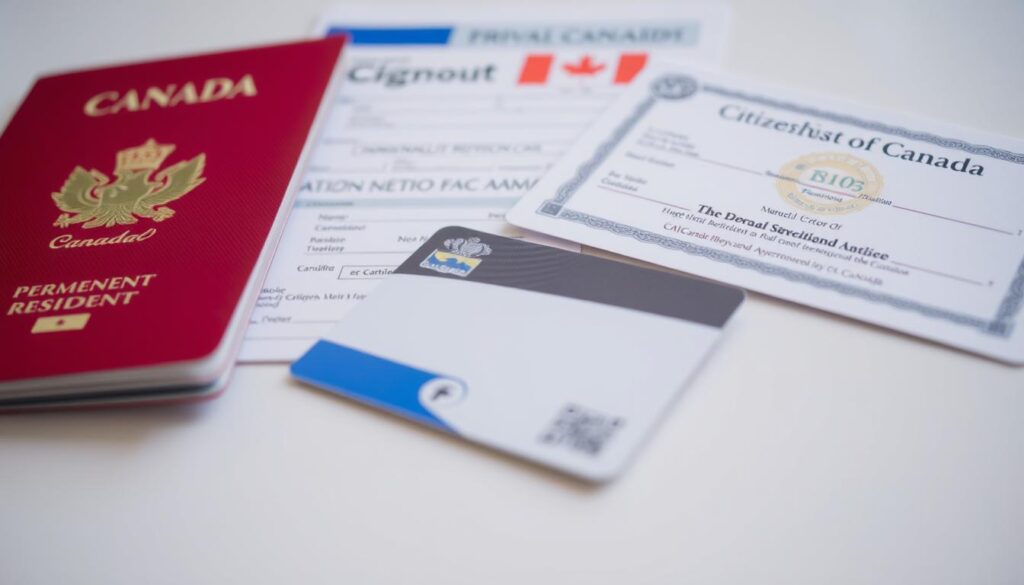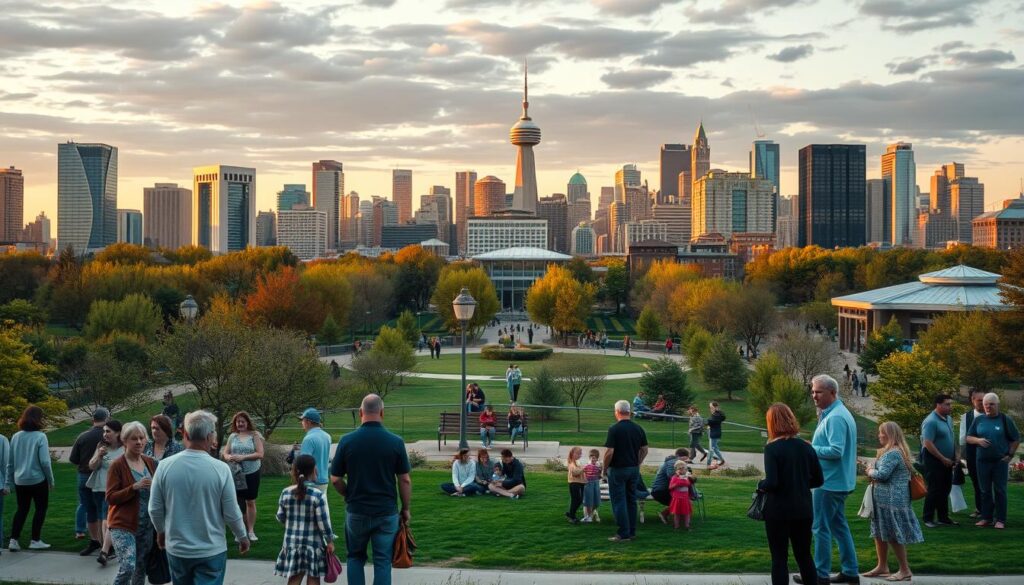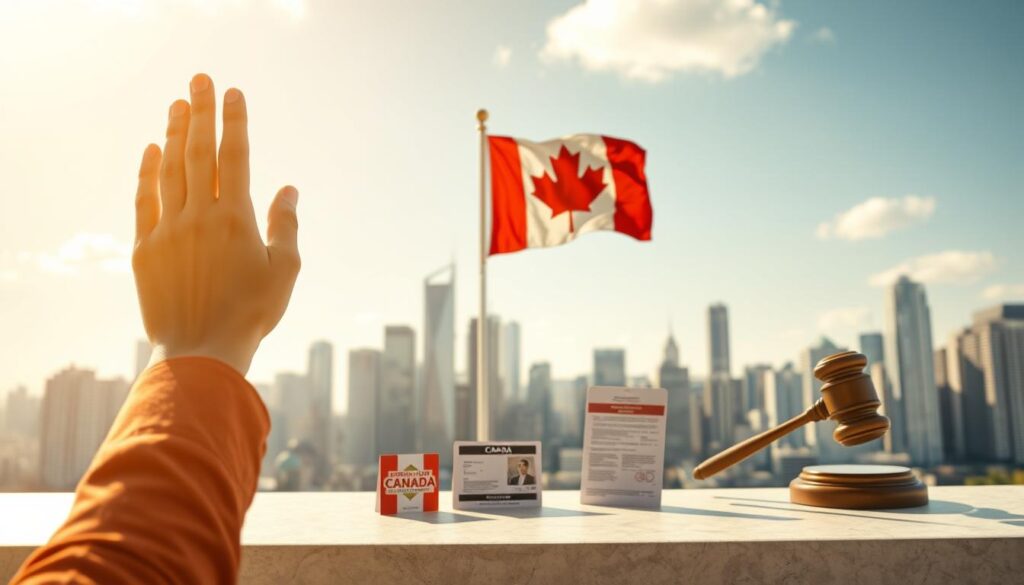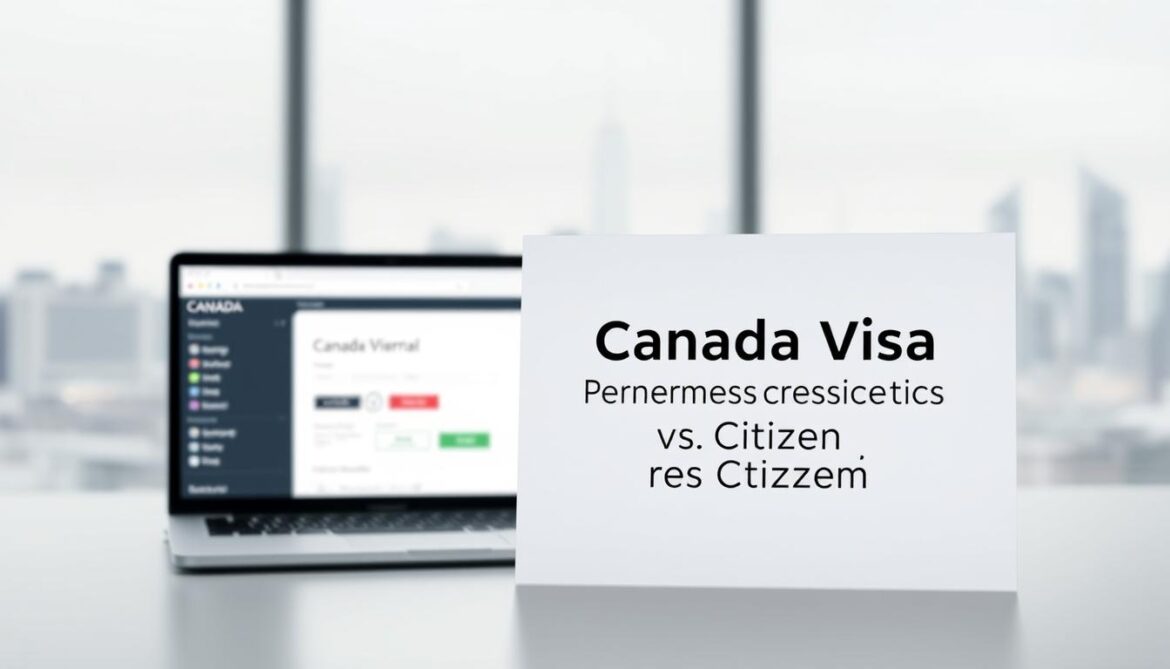Did you know that over 400,000 people choose to settle in the Great White North each year? Whether you’re planning to stay temporarily or for life, understanding your options is crucial. The Canada Visa Portal serves as your go-to resource for navigating the complexities of residency and citizenship.
Choosing between these two statuses affects everything from work opportunities to travel flexibility. Some benefits are immediate, while others take years to unlock. This guide breaks down the key differences so you can make an informed decision.
Your long-term goals shape which path suits you best. From healthcare access to voting rights, each status comes with unique advantages. Let’s explore what matters most for newcomers building their future here.
Introduction: Understanding Permanent Residency and Citizenship
Navigating life in the Great White North starts with understanding your status. The Canada Visa Portal simplifies this by outlining two primary options: permanent resident status and full citizenship. Each unlocks different opportunities for work, travel, and community ties.

A permanent resident holds the right to live, work, or study anywhere in the country indefinitely. Unlike temporary visas, this status offers stability—but stops short of political participation. Citizenship, however, is the final milestone, granting a Canadian passport and voting rights.
“Over 94% of permanent residents meet the requirements for citizenship within their first decade, reflecting Canada’s inclusive naturalization process.”
Both statuses share core benefits:
- Access to universal healthcare
- Freedom to work for any employer
- Eligibility for public education
| Feature | Permanent Resident | Canadian Citizens |
|---|---|---|
| Voting Rights | No | Yes |
| Passport Eligibility | PR Card only | Yes |
| Residency Obligations | 730 days/5 years | None |
Your choice impacts long-term goals. For families, citizenship ensures uninterrupted schooling. Professionals often prioritize PR for quicker entry, then naturalize later. The Canada Visa Portal helps tailor this decision to your timeline.
Key Differences Between Permanent Resident vs Citizen Canada
From voting rights to job opportunities, your status defines what you can do. While both options offer stability, only one unlocks full participation in society. Let’s break down the critical contrasts.

Democratic Participation: Voting and Political Office
In the 2024 federal election, over 27 million people cast ballots—but PR holders were excluded. Unlike citizens, they cannot vote or run for office, even at municipal levels. This extends to roles like school board trustee or MP.
Political influence remains off-limits until naturalization. For those passionate about policy, citizenship is the only route to shape decisions.
Employment Restrictions and Security Clearances
Certain government jobs require high-level clearances. PRs face barriers here:
- CSIS intelligence analyst
- Military leadership roles
- Cabinet Minister positions
Citizenship is mandatory for these careers. Private sector roles rarely impose such limits, though.
Residency Requirements and Stability
PRs must spend 730 days in the country within five years to maintain status. The *physical presence calculator* tracks compliance. Fail to meet this, and you risk losing your standing.
Citizenship, once granted, has no residency rules. Revocation occurs only in fraud cases—fewer than 0.01% annually per 2023 data. PR status, however, can be lost for criminal convictions or misrepresentation.
| Scenario | PR Consequences | Citizen Consequences |
|---|---|---|
| Residency Lapses | Status revocation | No impact |
| Fraud Allegations | Deportation | Court review required |
For long-term security, citizenship offers unmatched stability. PRs enjoy flexibility but must prioritize renewal deadlines.
Travel Privileges and Documentation
Your travel freedom expands dramatically depending on your status in the country. While both PRs and citizens enjoy stability, their global mobility differs significantly. The right documents can mean seamless travel or unexpected hurdles.

PR Card vs. Canadian Passport
A PR card is valid for five years and proves your right to return. Renewals cost $50 and require proof of residency. Lose it outside Canada, and you’ll need a Permanent Resident Travel Document (PRTD) to re-enter.
A Canadian passport, valid for a decade, offers broader privileges. It’s recognized globally and simplifies border processes. Renewal fees are higher ($120), but the benefits outweigh the cost for frequent travelers.
“Citizens enjoy visa-free access to 187 countries, while PRs can visit only 93—often requiring additional paperwork.”
Visa-Free Access and Consular Support
The difference in visa-free access is stark. For example, PRs need visas for the Schengen Zone, while citizens bypass them. Business trips or vacations become smoother with a passport.
In emergencies, consular assistance is another advantage. During the 2023 Lebanon evacuation, citizens received priority repatriation. PRs relied on embassy coordination, which often delayed their return.
- Dual citizenship: Entrepreneurs benefit from holding multiple passports, easing global business operations.
- PRTD delays: Processing can take weeks, stranding travelers during crises.
Rights and Responsibilities
Understanding your rights and duties is key to thriving in your new home. Whether you’re a long-term settler or recently arrived, social programs and legal expectations differ slightly. Both statuses share core benefits canadian like healthcare, but nuances exist.

Social Benefits and Healthcare Access
All provinces provide universal healthcare after a *three-month waiting period*. Coverage includes doctor visits and hospital care. PRs and citizens qualify equally, but timelines vary:
| Province | Waiting Period |
|---|---|
| Ontario | 3 months |
| British Columbia | 2 months |
| Quebec | 3 months (exceptions for refugees) |
Employment Insurance (EI) and CPP follow similar rules. You need 420–700 insurable hours, depending on regional unemployment rates. The process is identical for both groups.
Tax Obligations for PRs and Citizens
Both file taxes on worldwide income. Newcomers can use offshore trusts for five years to ease transitions. The CRA applies a *substantial ties test* to determine residency status:
- Home ownership or leases
- Spouse or dependents in Canada
- Driver’s license or health card
“Over 85% of PRs report global income by their third tax year, aligning with citizens’ tax obligations.”
Sponsorship duties also mirror each other. You must financially support family members for 3–20 years, depending on their age and relationship. Misrepresentation risks penalties for both statuses.
Pathways to Citizenship for Permanent Residents
Naturalization unlocks privileges beyond basic settlement rights. Transitioning from a canadian permanent resident to a full member involves meeting strict benchmarks. The process rewards commitment to the country’s values and systems.

Eligibility Criteria and Residency Rules
To qualify, permanent residents must live in the country for 1,095 days (three years) within five years. Time spent on temporary visas counts as half, up to 365 days. The Canada Visa Portal’s physical presence calculator helps track compliance.
Exceptions exist for Crown servants or family members abroad. However, gaps exceeding 1,095 days reset the clock. Always keep travel records to prove residency.
Language Proficiency and Citizenship Test
Applicants need language proficiency at CLB/NCLC 4 in English or French. This means:
- Basic conversations about daily life
- Understanding simple instructions
- Writing short sentences
The citizenship test covers history, symbols, and Indigenous rights. Sample 2024 questions include:
“Which group signed treaties with the Crown before Confederation?”
A score of 20/25 passes. French test-takers follow the same rubric. Virtual ceremonies, introduced during COVID-19, remain optional. Processing averages 15 months but varies by province—Ontario currently leads at 12 months.
Conclusion: Choosing Between Permanent Residency and Citizenship
Deciding your future here means weighing flexibility against full belonging. The Canada Visa Portal helps compare key factors like travel ease, voting rights, and job access. Over 86% of eligible PRs transition to citizenship—proof of its long-term benefits.
Emerging trends, like digital nomadism, complicate residency rules. New December 2024 updates may affect your timeline. Use the portal’s status assessment tools to model scenarios.
Ready to upgrade? Start with language tests or residency calculators. Your next step awaits.



